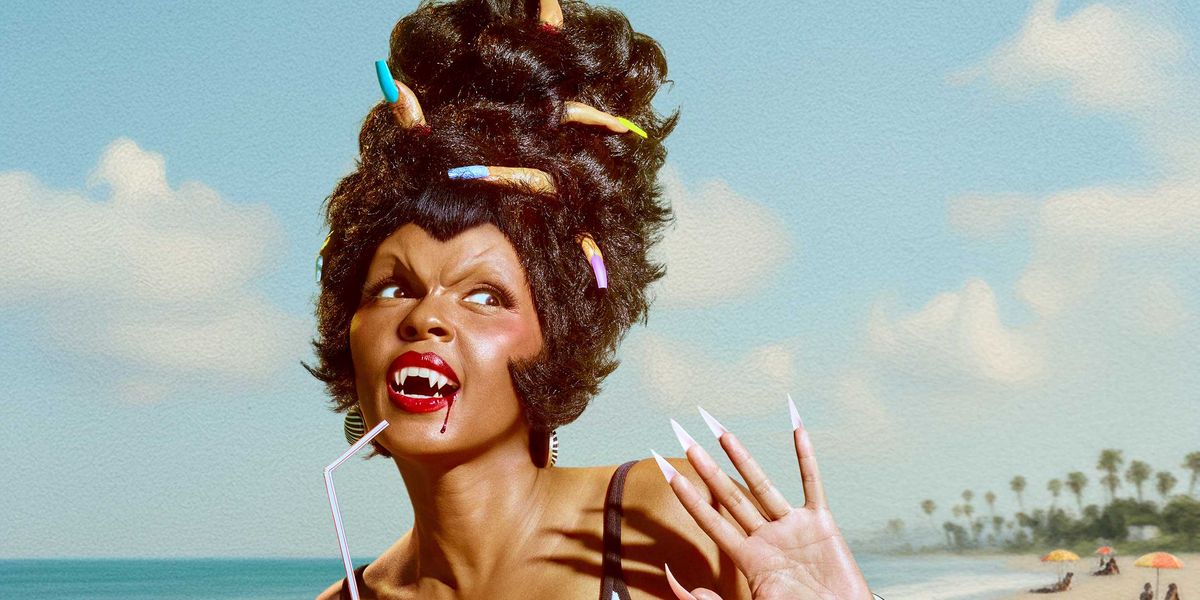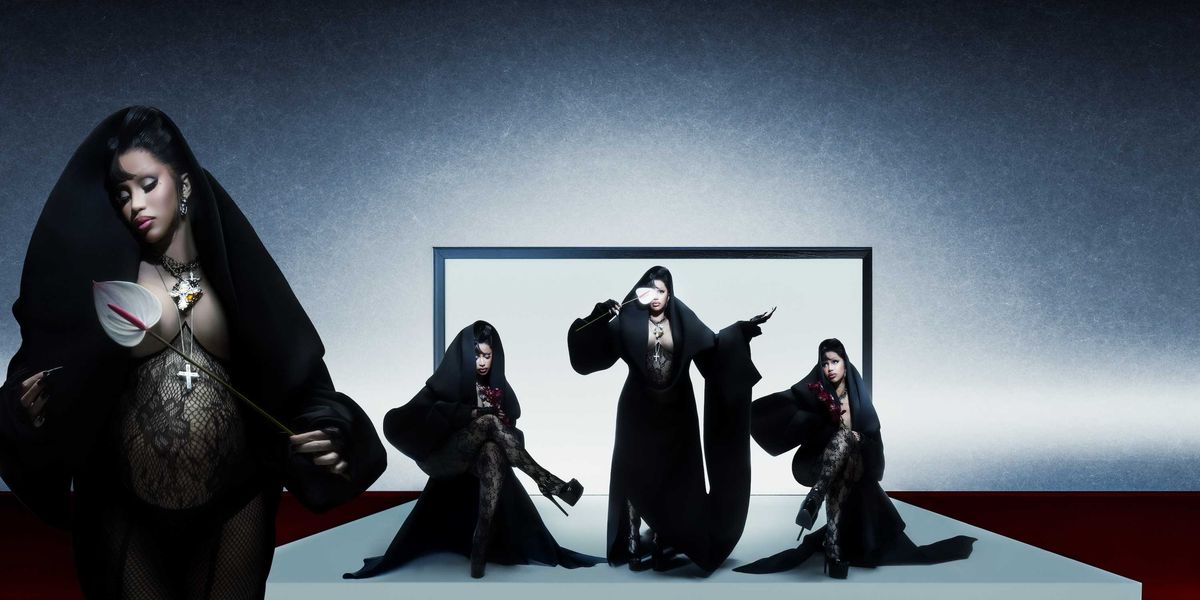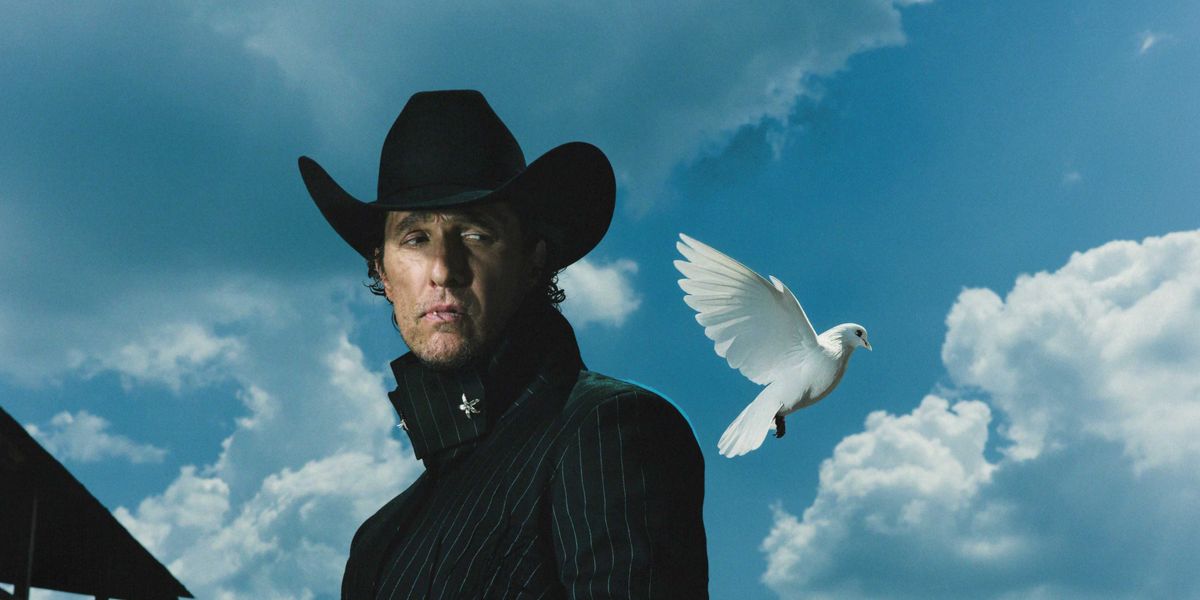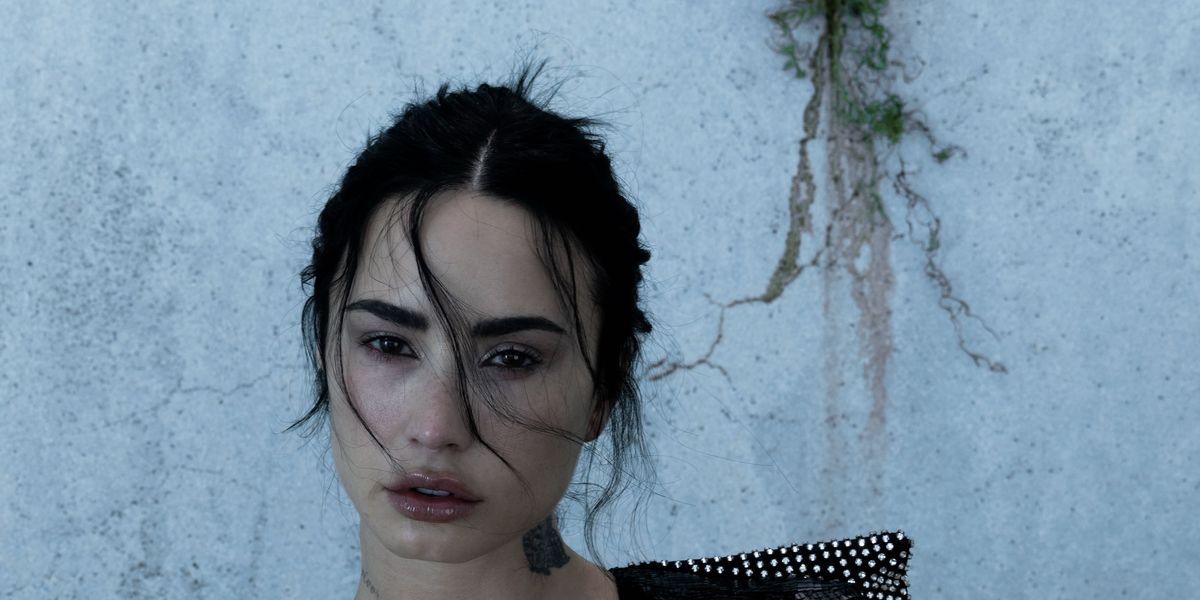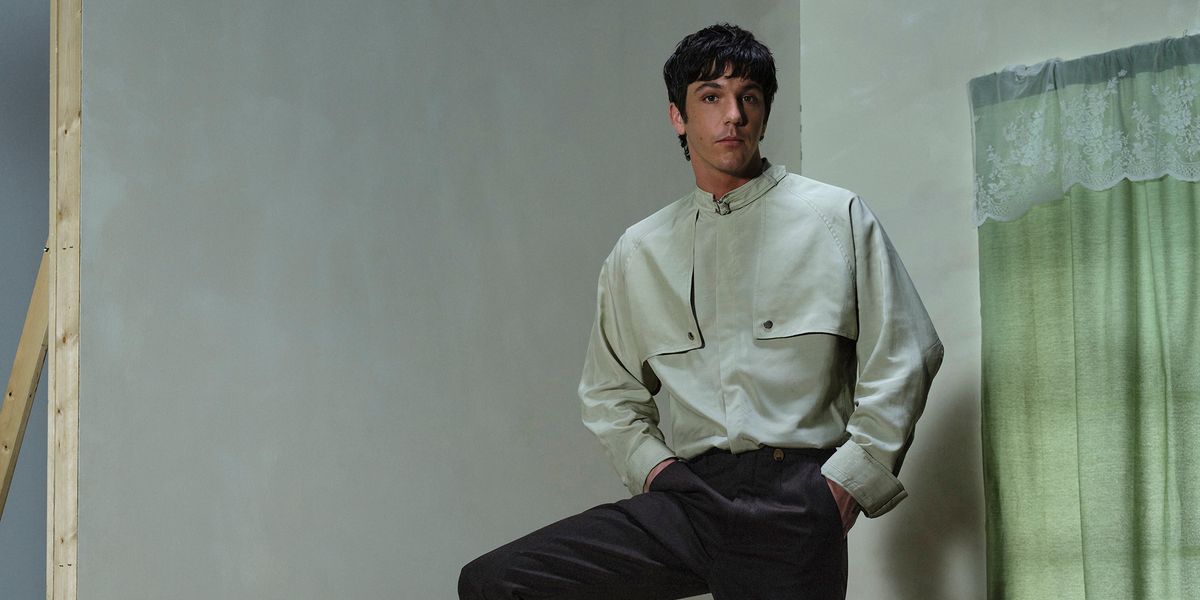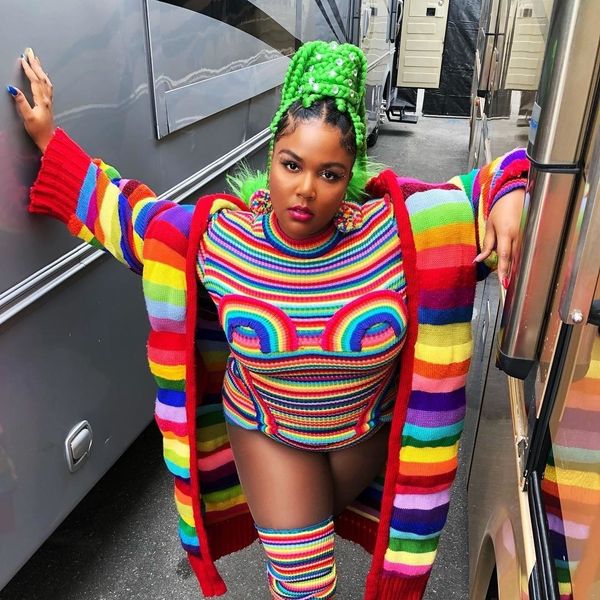
The Body Positive Designer Behind Lizzo's Rainbow Pride Look
Jun 27, 2018
If you were to have told queer designer Grace Insogna that within weeks of her graduation one of the best-loved LGBTQ icons would be donning her knits at perhaps the world's most-salient Pride festivities alongside seminal artist Big Freedia, well, she might have just unravelled into a tangle of rainbow wool.
The 27-year-old founder and designer of label Disgrace NY was "bop" queen Lizzo's first choice to dress her for her Pier 97 show during New York City's Pride weekend. There was no lookbook, no e-commerce store; not even a month had passed since her FIT graduation when Lizzo reached out to Insogna directly, commenting on a picture of a rainbow-striped wool bodysuit (with rainbows over the breasts), matching duster coat and leg warmers with a simple "I need this." With or without Lizzo's co-sign, the look was bound to create a splash: it was the first plus-size design to hit the FIT runway.
Related | Big Freedia and Lizzo Talk All Things Louisiana Bounce
Now, the New York native is committed to representing all body types, abilities, races, gender identities and sexualities with her designs. Fashion's long-protected exclusivity is something that desperately needs to be overhauled, Insogna asserts, acknowledging that diversity is slowly gaining traction in the industry, she's ready to speed up the process.
Tell me a little about your foray into design — what was it about knitwear that you found so appealing?
For me, fashion has always been a medium for self expression and transformation. As a teenager, I taught myself how to sew so I could create unique garments for my body type, something not easily found in my rural hometown. It's possible that my interest in fashion was inherited from my grandmother, an expert seamstress and pattern-maker. I want to continue her legacy and create garments for all body types, abilities and genders.
Knitwear is an exciting frontier of fashion because the possibilities are endless. Designs can be transformed by mixing different yarns, stitches, gauges, and textures. Knitwear straddles a line of tradition and technology, and that is what makes it so thrilling.
What's the process behind one of your designs?
The process for my senior thesis began on a trip home to see my family. I have four younger nieces and I always tap into my playful inner child when I'm with them. I started sketching with their crayons and the page exploded with color. I translated my doodles into experimenting with knit swatches and created the sample for my final fabric, which I knit myself!
You're a staunch advocate for body positivity and diversity and on the runway, why do you think fashion's been so slow when it comes to inclusion?
I'm honestly not sure! It doesn't make sense to me why brands wouldn't want to feature a diverse array of people in their campaigns. It probably comes down to warped Euro-centric standards of beauty and false ideals of aspiration which aim to create desire through exclusion rather than inclusion. Let's be honest, the fashion industry is pretty far behind in a multitude of ways — diversity, ethicality and sustainability being just three. There's so much opportunity for the plus-size market in particular, which in my opinion is still completely neglected.
I can't imagine what it must have been like to have Lizzo reach out to you, what was your reaction?
I was ecstatic. As a queer person, being represented at Pride is a magically affirming experience. I have so much admiration for her choosing to feature my work, as a recent graduate and small up-and-coming designer. The garment fit her like a glove, no adjustments necessary! I'd already had so much respect for Lizzo as an artist and body positive activist so dressing her was truly a dream come true.
What do you believe that the next generation of designers can provide the industry that's currently missing?
I think change is already happening, but I would love to see more inclusivity in our industry. The runways are still so homogenized and seeing a broader range of people from different backgrounds would be a breath of fresh air. Representation is so important — the visibility of differently-abled folks, people of color, plus size people and transgender and non-binary people on large platforms is empowering to people in the audience who relate to their experiences.
I think that my peers, both as consumers and creators, are expecting accountability and conscientiousness from brands. We're seeking clothing which is made with intention beyond just the financial bottom line. I think people are becoming more interested in the stories behind the garments they're wearing. It's no longer just the finished product, we want to know the where what and who made our clothes.
Is that what you find most exciting about fashion's future?
I'm most excited to see more representation in media, more brands dressing all body types and abilities and most of all to have that translate into wearable options for everyone on the shop floor. Fashion is heading in such an interesting direction — so many of us are determined to challenge the status quo which is set before us. I've always believed that the clothing we wear on our bodies is political and I think that is true now more than ever. In the midst of fear and uncertainty in our world today, there is joy and resilience within our community. I feel so lucky to be part of a colorful community in NYC that is exploding with creativity and champions diverse voices across the board.
Photo via Instagram
MORE ON PAPER
Music
Janelle Monáe, HalloQueen
Story by Ivan Guzman / Photography by Pol Kurucz/ Styling by Alexandra Mandelkorn/ Hair by Nikki Nelms/ Makeup by Sasha Glasser/ Nails by Juan Alvear/ Set design by Krystall Schott
Story by Ivan Guzman / Photography by Pol Kurucz/ Styling by Alexandra Mandelkorn/ Hair by Nikki Nelms/ Makeup by Sasha Glasser/ Nails by Juan Alvear/ Set design by Krystall Schott
27 October
Music
You Don’t Move Cardi B
Story by Erica Campbell / Photography by Jora Frantzis / Styling by Kollin Carter/ Hair by Tokyo Stylez/ Makeup by Erika LaPearl/ Nails by Coca Nguyen/ Set design by Allegra Peyton
Story by Erica Campbell / Photography by Jora Frantzis / Styling by Kollin Carter/ Hair by Tokyo Stylez/ Makeup by Erika LaPearl/ Nails by Coca Nguyen/ Set design by Allegra Peyton
14 October
Entertainment
Matthew McConaughey Found His Rhythm
Story by Joan Summers / Photography by Greg Swales / Styling by Angelina Cantu / Grooming by Kara Yoshimoto Bua
Story by Joan Summers / Photography by Greg Swales / Styling by Angelina Cantu / Grooming by Kara Yoshimoto Bua
30 September
Music
Demi Lovato Is No Joke
Story by Ivan Guzman / Photography by Jason Renaud / Styling by Chris Horan/ Makeup by Loftjet / Set design by Allegra Peyton
Story by Ivan Guzman / Photography by Jason Renaud / Styling by Chris Horan/ Makeup by Loftjet / Set design by Allegra Peyton
15 September
Music
Role Model Isn’t In Kansas Anymore
Story by Tobias Hess / Photography by Richie Talboy / Styling by Angelina Cantú / Grooming by Jerrod Roberts / Set design by Allegra Peyton
Story by Tobias Hess / Photography by Richie Talboy / Styling by Angelina Cantú / Grooming by Jerrod Roberts / Set design by Allegra Peyton
14 August
